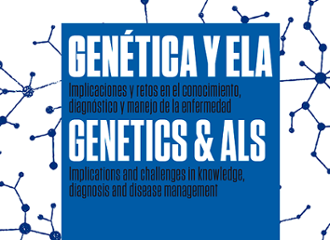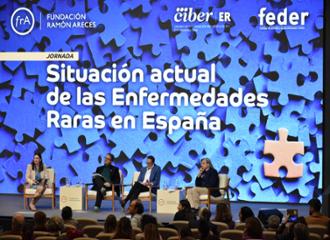Proyectos
Proyectos de investigación
Comienza el contenido principal
Towards the improvement of diagnosis and treatment in Congenital Dyserythropoyetic Anaemias
18th national competition for scientific and technical research
Rare diseases

Investigador Principal: María del Carmen Sánchez Fernández
Centro de investigación o Institución: Instituto de Investigación contra la Leucemia Josep Carreras (IJC). Barcelona.
Abstract
Congenital dyserythropoietic anaemia (CDA) is a heterogeneous group of hematological disorders characterized by anaemia and distinct morphological abnormalities of erythroid precursors in the bone marrow. Patients with CDA present congenital and chronic anaemia of variable degree with a reticulocytosis not corresponding to the degree of anaemia (ineffective erythropoiesis), jaundice and frequently splenomegaly and/or hepatomegaly. Morbidity in CDA I, CDAII and other CDA patients that require continuous blood transfusions may be important due to iron overload complications that can be fatal if untreated.
Five classical types of CDAs (I-II-III-IV and XLTDA) have been defined on the basis of bone marrow morphology. CDA type II is the most common and well-defined form among CDAs. This working classification is nowadays still used in clinical practice. However, the identification of the mutated genes involved in the majority of CDA subgroups will improve the diagnostic possibilities and will allow a better classification of CDA patients, since at present, in many cases a final diagnosis is not achieved. On the other hand, there are several families that fulfill the general definition of CDAs, but do not conform to any of the classical CDA variants. Although several studies about molecular genetics and genotype-phenotype correlation have been performed in this field, the pathophysiology of CDAs is still an unsolved issue. Beyond to achieve a definitive diagnosis, knowing the genetic basis of CDA patients is valuable also for unravelling the pathophysiology of these disorders, as well as for guiding treatment (depending of the type of CDA, different treatments have been established).
The project is being carried out by 2 international teams that are world-wide recognized as experts in Congenital Dyserythropoietic Anaemia (CDA) and has the direct support of 2 patient associations (ADISCON and APU).
Scientific Production |
|
|---|---|
| Magazine Articles | 4 |
| Communications at national conferences | 7 |
| Communications at international conferences | 15 |
-
 Actividades relacionadas
Actividades relacionadas
-
 Proyectos relacionados
Proyectos relacionados
-
 Noticias relacionadas
Noticias relacionadas
-
 Publicaciones relacionadas
Publicaciones relacionadas
 Actividades relacionadas
Actividades relacionadas
-
30
ene
2020
International Symposium Understanding and reprogramming developmental visual disorders: from anophthalmia to cortical impairments Madrid, Thursday and Friday, 30 and 31 January 2020, 9:30 hours
-
8
abr
2024
Panel Discussion Mundo de las prótesis, los nuevos materiales, sus complicaciones y su futuro Madrid , Lunes, 8 de abril 2024. 17.00 horas
-
23
abr
2024
Session Situación actual de las Enfermedades Raras en España Madrid, Martes, 23 de abril de 2024, 10:00 horas
 Proyectos relacionados
Proyectos relacionados
- New therapeutic targets for myotonic dystrophy: analysis of microRNAs in two animal models of the disease Investigador Principal: Rubén Darío Artero Allepuz Centro de investigación o Institución: Facultad de Biología. Universidad de Valencia
- Molecular genetic study of recessive hereditary autosomal hearing loss, linked to X chromosome and maternal mitochondria Investigador Principal: Ignacio del Castillo Fernández del Pino Centro de investigación o Institución: Hospital Universitario Ramón y Cajal. Madrid.
- Study of the possible immunomodulation caused by Anisakis simplex larval antigens Investigador Principal: María del Carmen Cuéllar del Hoyo Centro de investigación o Institución: Facultad de Farmacia. Universidad Complutense. Madrid
 Noticias relacionadas
Noticias relacionadas
-

-

La Fundación Ramón Areces refuerza su compromiso con las enfermedades raras
Publicado el 23/04/2024
 Publicaciones relacionadas
Publicaciones relacionadas
Fin del contenido principal




